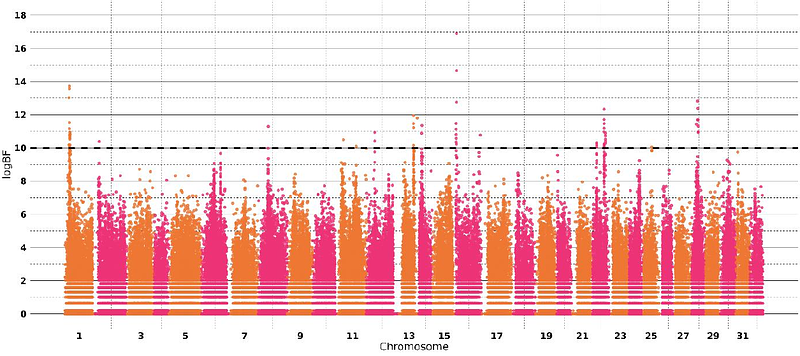High-density genome-wide association study points out major candidate genes for resistance to infectious pancreatic necrosis in rainbow trout

High-density genome-wide association study points out major candidate genes for resistance to infectious pancreatic necrosis in rainbow trout
D'Ambrosio, J.; Francois, Y.; Morin, T.; Courant, S.; Desgranges, A.; Haffray, P.; Collet, B.; Boudinot, P.; Phocas, F.
AbstractBackground: This study focuses on genetic resistance to infectious pancreatic necrosis (IPN), a highly contagious disease caused by an aquatic birnavirus (IPNV) which especially affects salmonids worldwide. The objectives were to estimate the heritability of IPN resistance and to fine map quantitative trait loci (QTL) using a Bayesian Sparse Linear Mixed Model to identify candidate genes possibly linked to IPN resistance in two successive generations from a French commercial strain of rainbow trout. For each generation, 2,000 fish were experimentally exposed by bath to IPNV and mortalities were monitored daily during 5 weeks. All fish were genotyped using a medium-density 57K SNP chip and imputed to high-density genotypes (665K SNP). Results: The mean survival rate was 70% after 37 days, with a higher survival rate in the second generation compared to the first one (78% versus 61%). Heritability was moderate (~0.20). Approximately 74% of the genetic variance of IPN resistance was explained by a few tens of SNP. In total, 25 QTL were mapped on 10 chromosomes. Among them, 7 were detected with very strong evidence on chromosomes 1, 14, 16 and 28. The most interesting QTL were associated to top SNP with mean survival rate differences over 20% between the beneficial and detrimental homozygous genotypes. Those SNP were all located within promising functional candidate genes on chromosome 1 (uts2d, rc3h1, ga45b) and chromosome 16 (irf2bp, eif2ak2), all these genes being associated to the regulation of inflammatory pathways. A key factor of the genetic differences in susceptibility to IPNV among fish is PKR, the dsRNA-dependent serine/threonine-protein kinase encoded by the eif2ak2 gene. Conclusions: All genes associated to the most significant QTL on chromosomes 1 and 16 are involved in the regulation of inflammatory pathways, strongly suggesting a central role of inflammation in the IPN resistance in rainbow trout. These findings offer the possibility of marker-assisted selection for rapid dissemination of genetic improvement for IPN resistance.